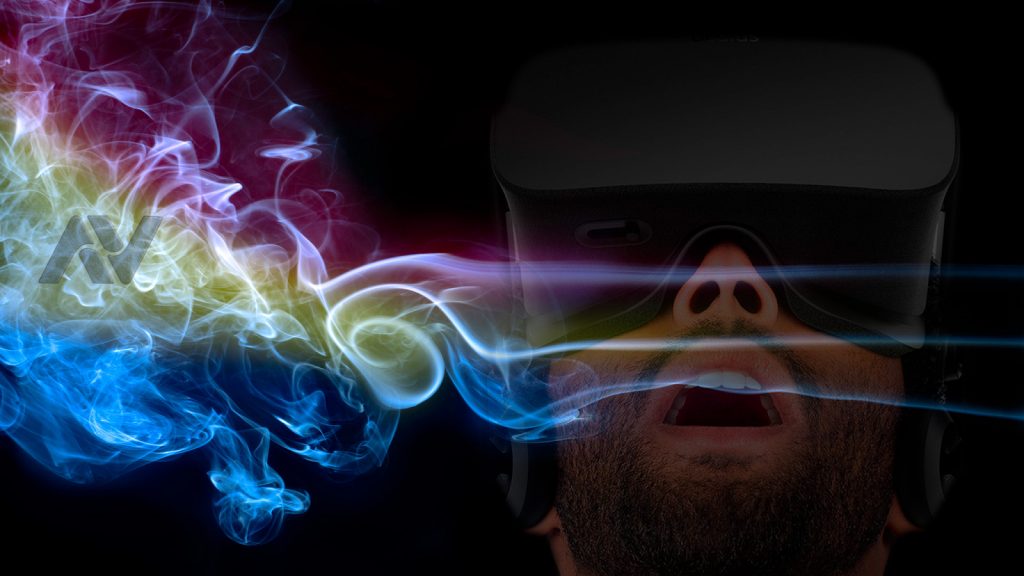
The once brick cellphone has now evolved into a smart device that can take photos, edit documents, and even do some AR (with the appropriate apps). I enjoy watching DIY cooking videos and always wanted to taste and smell the great dishes that I see YouTubers prepare. This got me interested in digital scent and taste. Hopefully, one of these days we can have a multisensorial smartphone.
Here is the link to my A3: https://chaoslamasloca.wixsite.com/etec523a3
Hello Silvia. A beautiful website and an attractive topic. I laughed when I saw a big nose showing up in the middle of the screen of an iPad.
You were exploring an underrated area. I can imagine how this technology can benefit courses such as chemistry, biology, winemaking and cooking. Some other subjects can use it too. History, for instance, can use it to simulate the smells on a battlefield.
The digitalization of smell and taste makes me think of Matrix the movie (many projects in this cause recalled my memory of that movie). Can this technology make the virtual world more real or make the real world more virtual? The entire entertainment industry will benefit from it.
Good job, very thought-provoking.
Yi
Hey Silvia!
I really enjoyed your look into the future of smart phone technology… and that you mentioned Smell-O Vision!! It’s so true that as we have advanced further with technology, we have focused on certain senses and neglected others. What do you see as the educational potentials of these advancements (other than online cooking classes making me even more hungry!)? While reading through your work, I envisioned a kind of neuro-link concept along the lines of what Carla talked about, where sensors would connect directly to the nervous system and “make” the brain smell and taste with impulses… but is this safe for the population? Could not someone then “hack” sensors and make people smell chloroform and have them go unconscious (I’ve been watching all The Avengers movies with my kids over summer so that’s where my brain goes…)?
Thanks again for this work; it really made think outside the box (not just in a comic way) about how our technological advancements are affecting us; pushing some senses to the brink of sensation (3D/AR/VR), while ignoring others. Plus, I’m never putting my tongue on that silver thing… not enough money in the world!
Hmmm… this was very interesting, thanks for sharing this forecasting Silvia. It was fun to go on the adventure and imagine what a future of digital scents and tastes would look like. Thinking about this had me considering the new frontier of brain-computer interfaces headed our way. Could this be something they could facilitate in some way? Neuralink is one of Elon Musk’s companies (sorry, you might already know this) and they are working on developing implantable brain-machine interfaces for the eventual goal of human enhancement. I wonder whether such interfaces might have the ability to activate the right kind of nervous system responses to trigger activity in the brain associated with certain smells and tastes. Would we then “seemingly” experience that taste or smell? The brain ultimately processes all sensory inputs as nerve impulses… so maybe…
Hello Carla,
That is interesting brain-computer interfaces. It’s an idea that came to my mind. I was thinking more smartphone wise, but it is a very good suggestion. I believe that what you are suggesting is feasible. Should that be successful maybe we can even avoid this accessory?
Hi Silvia,
Back in the days we never thought that we could see each other’s faces while talking on the phone and that everyone could become a film director… The advance of technology has democratized non-text formats, for example, audio and visual texts; however, as you said, we haven’t been able to digitize smell and taste yet. Based on your research, your prediction of a portable, smaller and wearable device that can receive and transmit taste and scents is quite compelling and feasible.
The proposition made by Olofsson et al. in 2017 is a very strong one: odors are linked to cultural meanings, emotions and memories, thus providing an even more enriching immersive experience. I can see how this piece of mobile technology can increase users’ interaction by involving their multi-sensorial receptors, hence increasing learning effectiveness. I remember your post on Digital Scent back in May, so glad you got to delve deeper into this topic through A3. Great job!
Hello Ceci,
Advancement in technology has been so focused on audiovisual that they have neglected the other senses. The digitalizing taste would be a challenge because of hygiene issues. After all, to taste, we need to use the tongue. I have never thought about smell that much, except when it comes to food. Have you ever encountered a situation where you smell something while walking on the street and you can recognize the scent? One starts to think where they have encountered that smell. The idea is there but it still needs to be worked on. Thank you for your comments.